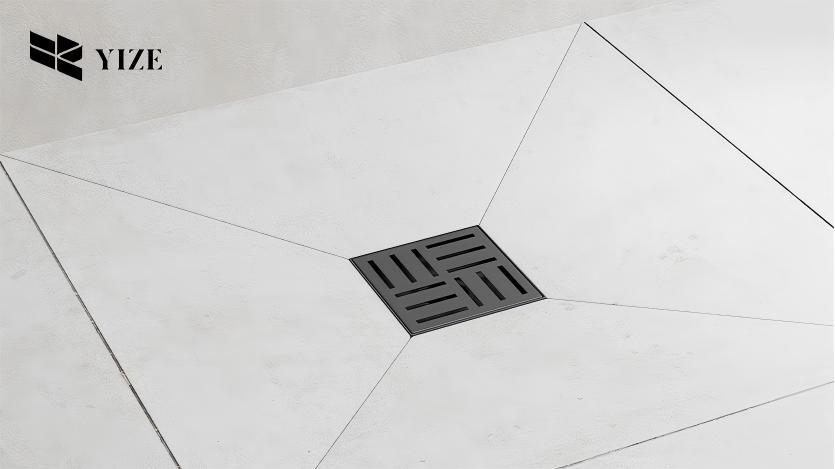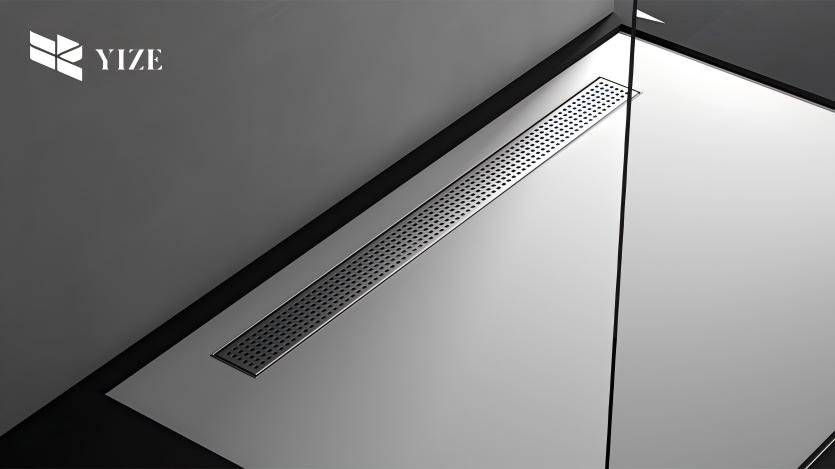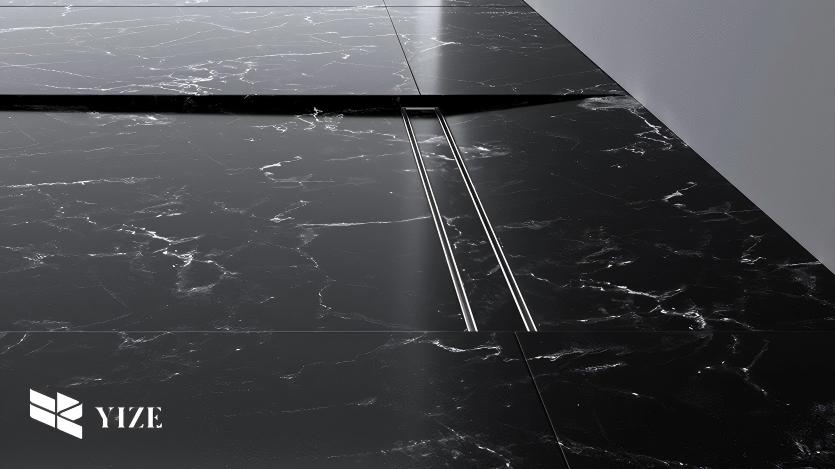Are you planning a bathroom renovation in 2025? One important but often ignored part is the shower drain. You may ask what size is a shower drain and why it matters. Well, a shower drain size is very important, and choosing the right size helps with proper water drainage and can prevent expensive plumbing problems in the future.
Whether you are replacing an old drain or installing a new one, knowing about shower drain sizes, drain pipe sizes, and modern plumbing standards will help you succeed.
I. Understanding Shower Drain Sizes
The standard shower drain pipe size is 2 inches in diameter. This size is commonly used because it allows enough water flow for most showerheads, which helps prevent water from pooling and overflowing. The International Plumbing Code (IPC) states that shower drains should have an outlet size of at least 1½ inches (38 mm) in diameter.
So, why 2 inches?
Shower drains are usually bigger than bathtub drains. Bathtub drains often use 1½-inch pipes, while showers need larger drains to handle more water. Therefore, a standard shower drain size of 2 inches helps remove water quickly, reducing the chance of standing water and problems like mold or mildew.
Here’s a breakdown of the standard drain size for showers:
| Bathroom Fixture | Typical Drain Size |
| Shower | 2 inches |
| Bathtub | 1.5 inches |
| Bathroom Sink | 1.25 to 1.5 inches |
| Toilet | 3 to 4 inches |
II. Factors Affecting Drain Size for Shower
1. Showerhead Flow Rate
Modern showerheads have different water flow rates. High-efficiency models use as little as 1.5 gallons per minute, while rain showerheads may use up to 2.5 GPM. If you have multiple showerheads or high-flow models, you might need a larger drain to handle the extra water.
2. Shower Design
The design of your shower affects the size of the drain you need. For example, curbless or walk-in showers work well with linear drains, which handle more water and look sleek. It’s important to choose the right drain size to ensure water flows out properly.
3. Local Plumbing Codes
Both the UPC and IPC codes say the drain pipe needs to be at least 2 inches wide. However, local rules might be a little different, so it’s important to check them before you start. Using the right pipe size helps prevent plumbing problems later and makes sure your installation passes any inspections.
III. Types of Shower Drains
1. Point Drains
Point drains are the most common type and usually sit in the center of the shower floor. They work well with different floor slopes and fit standard shower setups.

2. Linear Drains
Linear drains are long and narrow and are installed along one edge of the shower floor. They work well for modern, curbless shower designs and can manage higher water flow. Their design allows for a single slope, making them great for larger tiles.

3. Tile-In Drains
These drains create a smooth appearance by matching the drain cover with the surrounding tile. They look nice and can work with both point and linear drain systems.

IV. Installation Considerations
1. Slope and Positioning
A proper slope towards the drain is important for effective water removal. Aim for a slope of 1/4 inch per foot toward the drain. If the slope is incorrect, water can pool and cause drainage problems.
2. Venting
Proper venting is important to avoid negative pressure in the drain line. This pressure can slow down drainage or cause traps to dry out. Make sure your shower drain is vented correctly according to local codes.
V. Drain Size and Bathroom Layouts
The way your bathroom is arranged affects how well the water drains. Long, flat pipes, many connections to different fixtures, and poor venting can slow down water flow, even if the pipes are the right size.
Here are some tips for smarter layouts:
- Minimize the distance between fixtures and the main stack
- Use proper slopes for horizontal drains (at least ¼ inch per foot)
- Avoid tight bends or flat runs in drain pipes.
- Ensure every fixture has proper venting.
VI. Maintenance Tips
- Regular Cleaning
Clean the drain cover and trap regularly to prevent clogs from hair and soap scum.
- Use Drain Screens
Installing a drain screen helps catch debris before it gets into the plumbing system.
- Avoid Harsh Chemicals
Use enzyme cleaners instead of strong chemicals to protect your pipes.
VII. Conclusion
Choosing the right size for your shower drain is important for your bathroom. A standard 2-inch drain works for most showers, but you might need to change this based on how fast your showerhead flows, your shower’s design, and local building codes. If you’re wondering what size is a shower drain, it’s a good idea to talk to a plumber. They can give you advice based on your specific needs to help ensure your shower works well and safely.
And if you’re looking for sleek and stylish shower drains, YZDrain can help you out! We have durable, code-compliant shower drains to fit every layout and flow rate.
FAQs
Q1: What size is a shower drain in modern bathrooms?
Most modern showers have a standard 2-inch drain and pipe.
Q2: Can I use a 1.5-inch drain?
Only if it’s already in place and your local code allows it, but upgrading to 2 inches is highly recommended.
Q3: What size drain pipe for shower remodels?
2 inches for optimal drainage and code compliance.
Q4: What size linear shower drain do I need?
The length can vary between 24 and 60 inches, but the pipe size stays 2 inches for most residential installs.
Q5: Is a 3-inch pipe ever necessary?
If you have custom or high-volume setups like double showers or spa rooms, then you can use a 3-inch pipe.
Q6: What size is a standard shower drain pipe?
In 2025, the standard shower drain pipe size is 2 inches.
